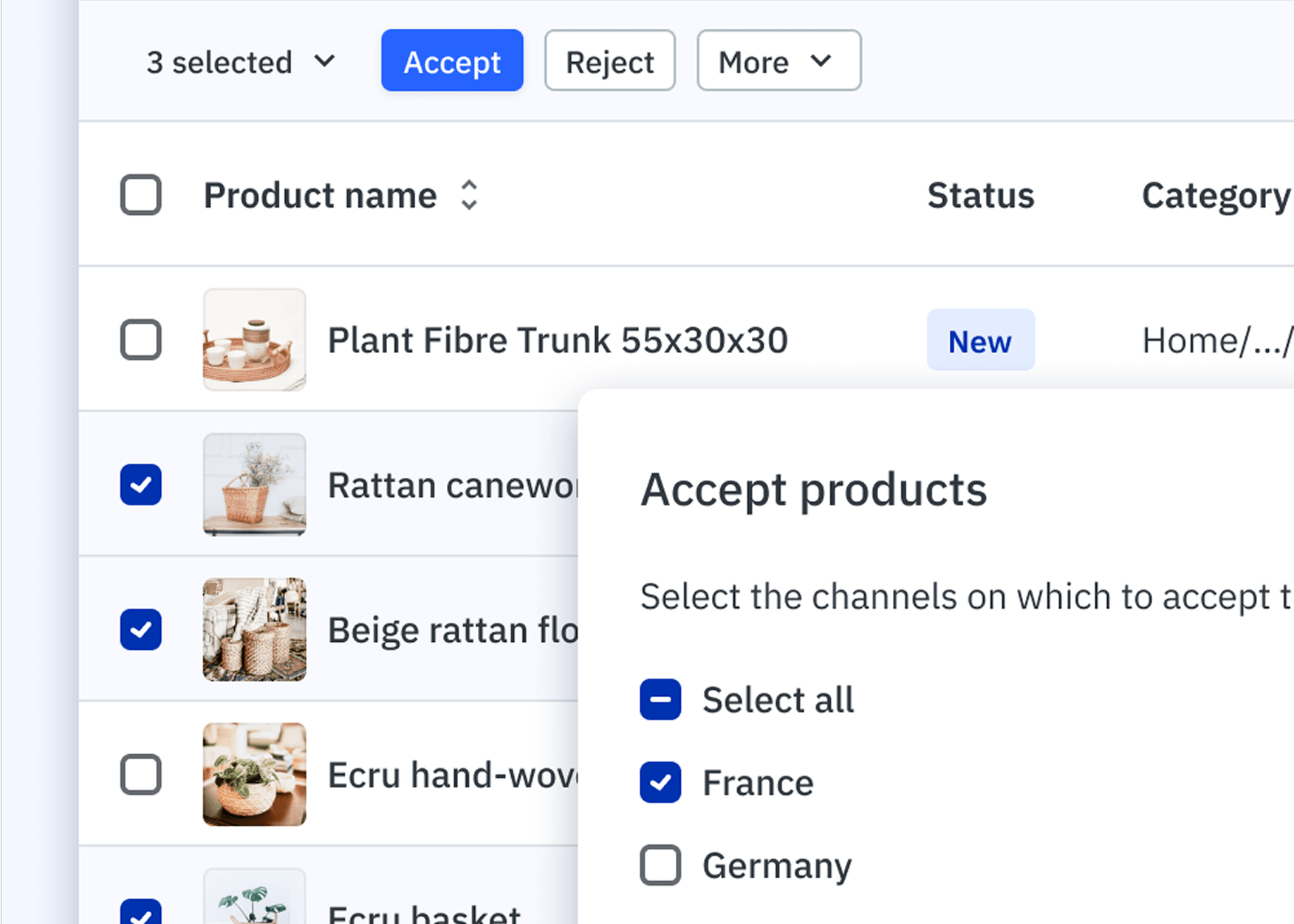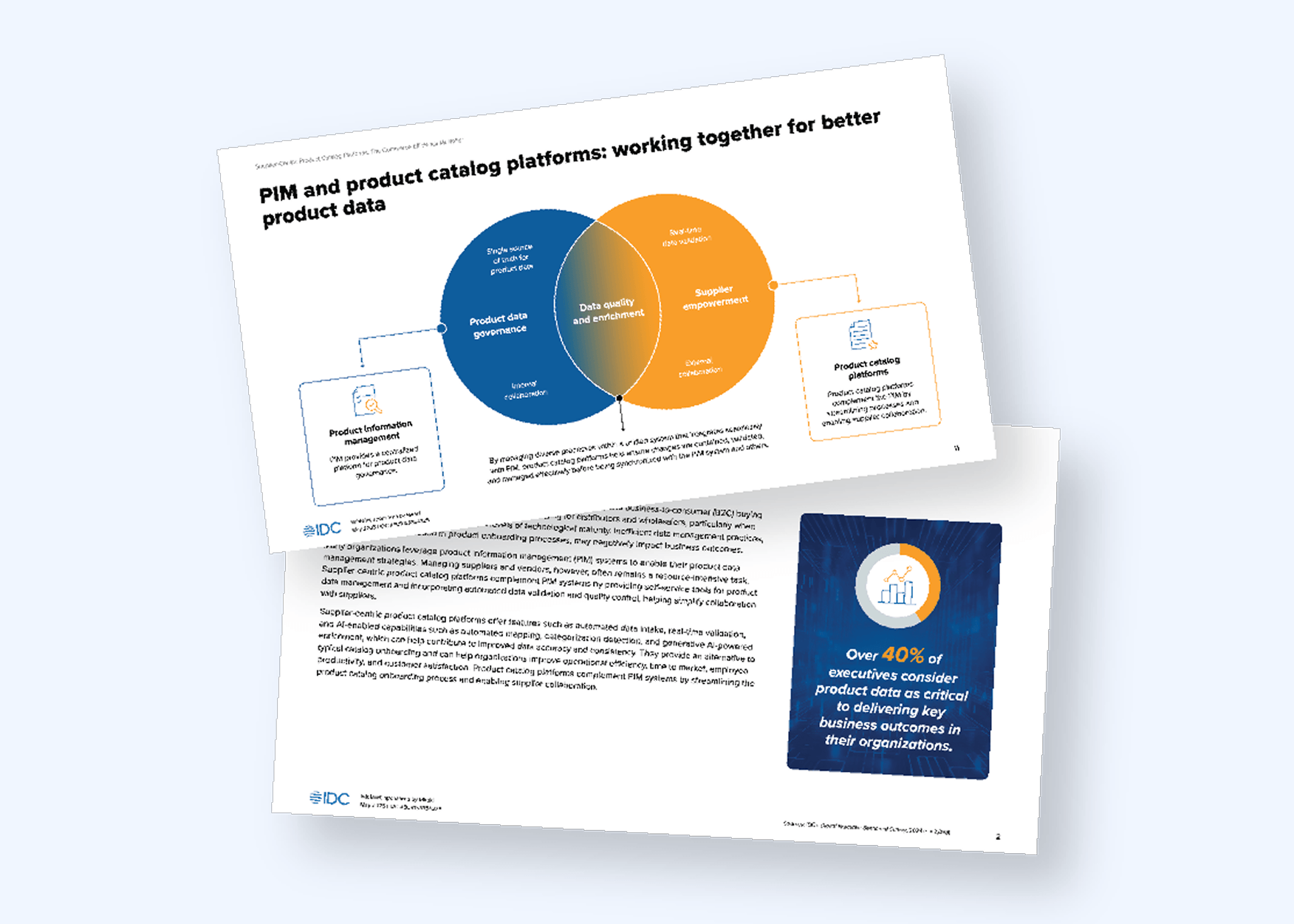How AI-powered catalog management accelerates growth for retailers and eCommerce businesses

Retailers and brands are in a high-stakes race. Shoppers, thanks to retail giants like Amazon and Walmart, have come to expect marketplace experience — demanding ever greater assortments, better product experiences and more accurate delivery dates.
But, just as this pressure to grow assortments mounts, a major revolution is happening in how people search for, discover and buy products.
AI agents and intelligent search systems are increasingly becoming the new middlemen between your products and your customers, actively recommending and comparing items in your catalog.
These new systems, just like traditional search engines, favor products with complete, accurate and well-structured data. And while AI shopping is growing quickly in the US, traditional search remains a major traffic driver in regions where AI is less prevalent, particularly in Europe. That means retailers and brands must optimize for both worlds: AI‑ready product data and strong SEO fundamentals.
This creates a critical challenge: How do you grow product assortment quickly across multiple channels while ensuring every listing meets the high standards that both AI systems and search engines demand?
The answer isn’t choosing between speed and quality. Winning businesses need both.
You need to onboard products and expand your catalog fast, and every product must be rich with detailed, consistent information that helps AI systems understand and recommend your offerings, while also supporting SEO performance in regions where AI shopping is less prevalent.
The growth bottleneck: Why manual catalog management is holding you back
Most businesses today are stuck in a time-consuming cycle that's preventing them from scaling effectively.
While AI accelerates everything around them, from customer expectations to market dynamics, they’re still relying on manual catalog processes that were designed for a slower, simpler time.
The manual catalog management problem
Every new product requires manual category mapping, measurement conversions, list-of-values standardization and attribute completion. A single product can take hours to process properly. For businesses with extensive catalogs, this creates weeks of work and significant delays in getting products to market.
This approach creates costly problems, including:
Delayed product launches and higher operational costs.
Inconsistent quality that hurts both AI discovery and on‑site customer experience.
Less complete product pages that are less likely to convert on your website.
Weaker SEO performance, due to the fact that thin or inconsistent product content is less likely to rank in organic results. This is especially critical in markets like Europe where SEO remains a primary acquisition channel.
Poor performance in AI‑driven search systems due to missing or messy data.
Optimizing product content for both AI discovery and SEO is not optional, it’s how eCommerce businesses protect traffic, preserve rankings and convert more visitors while they scale assortment.
Solution: Catalog Transformer built for modern commerce
Mirakl's Catalog Transformer reimagines catalog management for retailers and eCommerce businesses who need to scale operations efficiently. It serves a dual purpose, bridging retailer and seller needs through shared AI services ultimately accelerating both inbound ingestion and outbound distribution.
Loading...
Categorize and transform: AI automatically analyzes incoming product data and transforms it to match destination platform or channel requirements, mapping categories intelligently and standardizing units and values.
Enrich: Mirakl’s technology extracts missing attributes from any structured or non-structured fields and images, optimizes titles and descriptions for better search performance, ensuring variant consistency.
Validate: Before any product goes live, our technology validates everything against existing catalog rules, generating clear error reports and guiding users through corrections.
Now with image attribute extraction
The Mirakl Catalog Transformer now uses image analysis to automatically extract key product attributes during transformation.
When input data is missing or incomplete, our technology adds structured attributes such as color, material, pattern or style, based on what’s visible in the images.
This creates more complete product profiles from information that's often absent in seller spreadsheets, but clearly visible in product photos. This newly available feature will be particularly beneficial for fashion and home categories, where visual details are essential to product understanding and purchasing decisions.
Why the Mirakl Catalog Transformer approach scales
Unlike point solutions that address only one side of the marketplace, Catalog Transformer creates value for retailers, brands and sellers.
For brands and sellers: Mirakl Catalog Transformer offers streamlined onboarding with less manual entry, multi‑channel readiness, quality validation at scale, and faster time‑to‑market.
For retailers: Mirakl Catalog Transformer means quicker launch of new products, richer catalogs that perform better across channels, improved seller experiences and automated quality control.
Mirakl Catalog Transformer is built directly into catalog workflows and rules
Mirakl Catalog Transformer's advanced vision‑based enrichment is natively embedded in Mirakl’s catalog workflows and acceptance rules.
Visual enrichment feeds directly into validation and quality checks, helping products pass faster, with higher quality data.
By contrast, AI add‑ons or PIM services that run image analysis outside of the catalog workflow require extra integration layers and don’t tie as tightly into acceptance criteria.
The results: Mirakl Catalog Transformer’s impact on retailers and eCommerce teams
The results Mirakl Catalog Transformer can produce aren’t hypothetical, and the numbers speak for themselves. Retailers and brands using Catalog Transformer see:
Loading...
Results that compound: The growth flywheel effect
When you combine faster onboarding with higher quality data, something powerful happens:
More products, faster: You can onboard more brands and expand your catalog quickly without sacrificing quality.
Better discoverability: Complete, accurate product information means better performance in AI search systems and higher visibility to customers.
Improved conversion: When customers can find detailed, consistent product information, they're more likely to make purchases.
Lower operational costs: Automation reduces the manual workload on your team while improving results.
Higher revenue: Faster time-to-market and better-performing listings directly translate to increased GMV.
Transform your catalog and win the agentic commerce era
Winning today means being visible in AI experiences and trusted by search engines. For retailers and brands, that will require both rapid catalog expansion and consistently complete, high‑quality product data.
Mirakl’s Catalog Transformer gives retailers and ecommerce teams a competitive advantage in each.
It eliminates manual bottlenecks, improves data quality and now adds visual intelligence that fills critical attribute gaps. That means products launch faster, rank better in organic search, surface more frequently in AI recommendations, and convert more shoppers.
If you’re ready to grow your assortment without sacrificing quality — or SEO — now is the time to transform your catalog to win in the agentic commerce era.
To get a first-hand look at how Mirakl Catalog Transformer can help you scale assortment without sacrificing quality, schedule a demo today.



